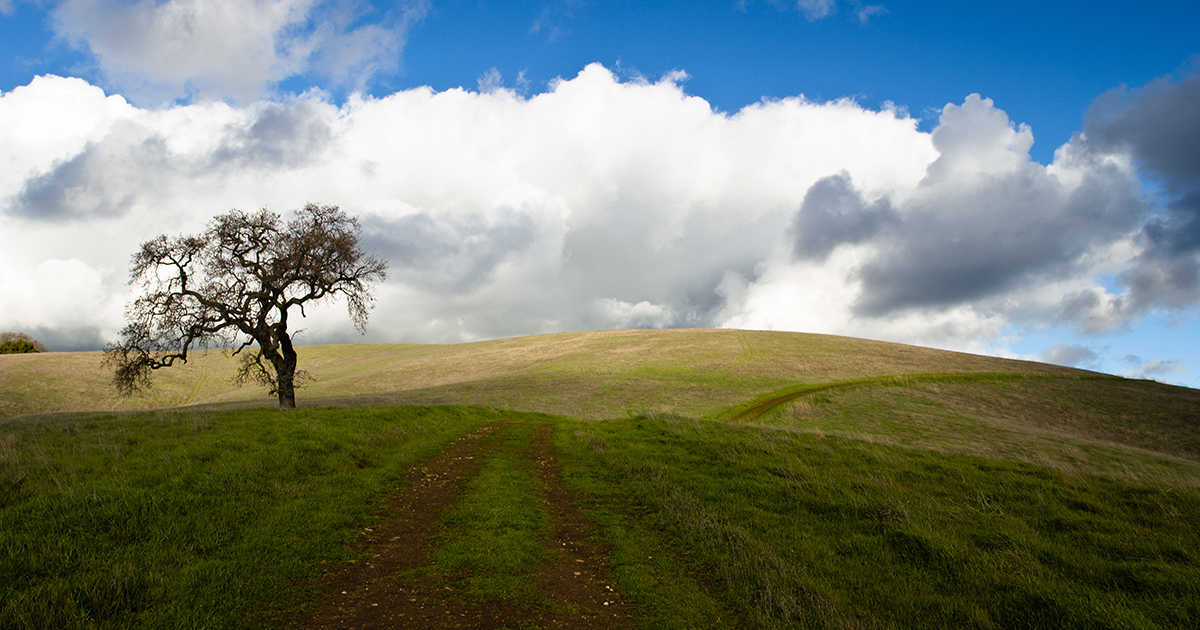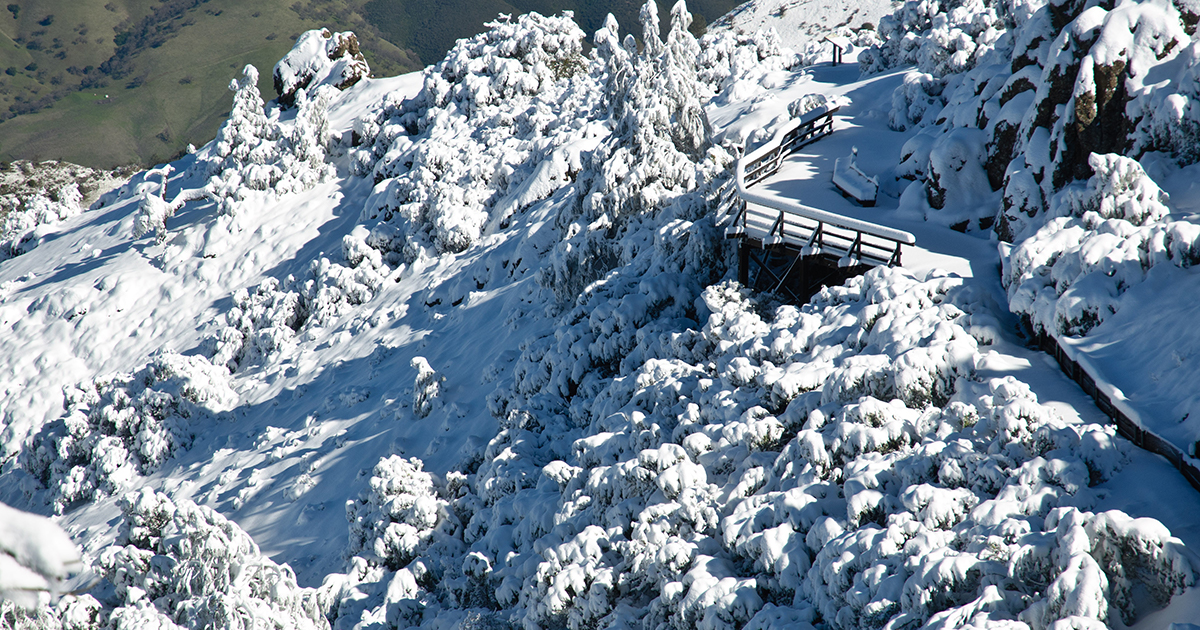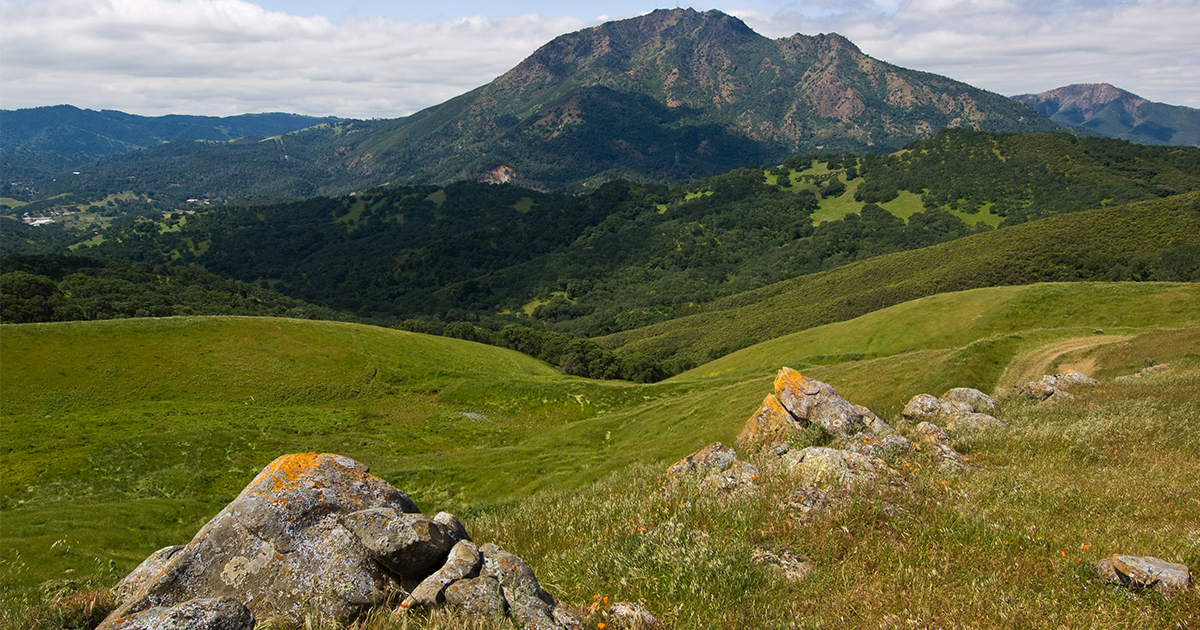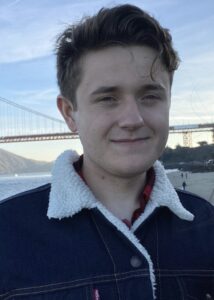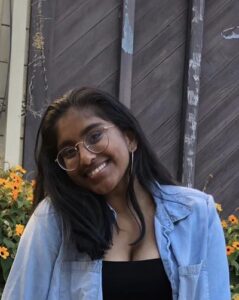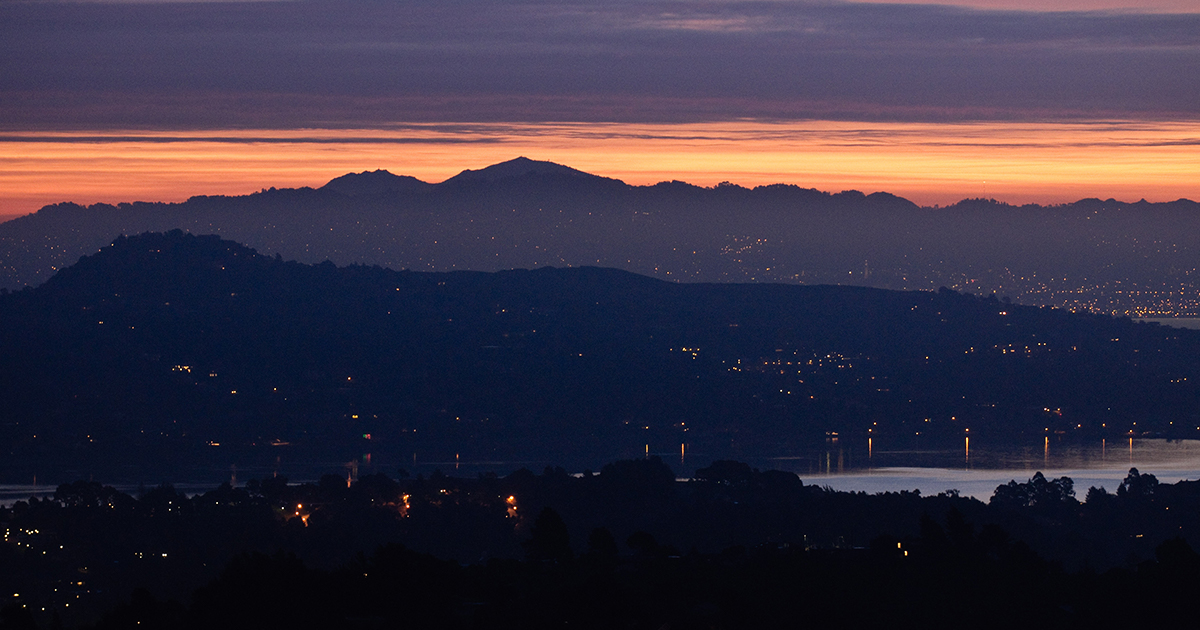
In Episode 3, we explore Save Mount Diablo’s future. From addressing the challenges of COVID-19 to fundraising efforts to protecting land and biodiversity in the entire Diablo Range to mitigating the impacts of climate change to expanding membership and partnerships, Save Mount Diablo still has a lot of good work ahead. This episode asks: what challenges does Save Mount Diablo face today? What can Save Mount Diablo do about climate change? What does the future of Save Mount Diablo look like?
In season 7 of The Berkeley Remix, a podcast of the Oral History Center at UC Berkeley, we head to Mount Diablo in Contra Costa County. In the three-part series, “Fifty Years of Save Mount Diablo,” we look at land conservation in the East Bay through the lens of Save Mount Diablo, a local grassroots organization. It’s been doing this work since December 1971—that’s fifty years. This season focuses on the organization’s past, present, and future. Join us as we celebrate this anniversary and the impact that Save Mount Diablo has had on land conservation in the Bay Area and beyond.
This season features interview clips from the Save Mount Diablo Oral History Project. A special thanks to Save Mount Diablo for supporting this project!
LISTEN TO EPISODE 3 ON SOUNDCLOUD:
PODCAST SHOW NOTES:
This episode features interviews from our Save Mount Diablo Oral History Project and includes clips from: Seth Adams, Burt Bassler, Ted Clement, Bob Doyle, Abby Fateman, Jim Felton, John Gallagher, Scott Hein, and Egon Pedersen. To learn more about these interviews, visit the Oral History Center’s website.
This episode was produced by Shanna Farrell and Amanda Tewes, and edited by Shanna Farrell. Thanks to Andrew Deakin and Anjali George for production assistance.
Original music by Paul Burnett.
Album image North Peak from Clayton Ranch. Episode 3 image Mount Diablo Sunrise from Marin County. All photographs courtesy of Scott Hein. For more information about these images, visit Hein Natural History Photography.
PODCAST TRANSCRIPT:
Amanda Tewes: EPISODE 3: Save Mount Diablo’s Future
[Theme music]
Shanna Farrell: Welcome to The Berkeley Remix, a podcast from the Oral History Center at the University of California, Berkeley. You’re listening to our seventh season, “Fifty Years of Save Mount Diablo.”
Farrell: I’m Shanna Farrell.
Tewes: And I’m Amanda Tewes. We’re interviewers at the Center and the leads for the Save Mount Diablo Oral History Project.
Tewes: This season we’re heading east of San Francisco to Mount Diablo in Contra Costa County. In this three-part mini-series, we look at land conservation through the lens of Save Mount Diablo, a local grassroots organization.
Farrell: It’s been doing this work since December 1971—that’s fifty years. This season focuses on the organization’s past, present, and future. Join us as we celebrate this anniversary and the impact that Save Mount Diablo has had on land conservation in the Bay Area and beyond.
Farrell: In this episode, we explore the future of Save Mount Diablo.
Farrell: ACT 1: What challenges does Save Mount Diablo face today?
[Soundbed- ambulance]
Tewes: On March 16, 2020, counties across the Bay Area issued a shelter-in-place order because the COVID-19 pandemic was on the rise. While this impacted life for everyone, it interrupted the work that Save Mount Diablo was doing as people stayed at home and the future was uncertain.
[Soundbed- doors locking]
Tewes: But executive director Ted Clement knew that life wouldn’t stop, and people needed to know that they weren’t alone, perhaps more than ever. So he decided to light the beacon at the top of Mount Diablo. Think of a lighthouse shining on the top of the highest mountain in the Bay Area.
Ted Clement: We started a special program lighting the beacon every Sunday night and letting it shine until Monday morning, to really create that symbol of hope and gratitude for nature, as well as all of our first responders.
Farrell: The beacon was originally lit in 1928 by Charles Lindbergh to provide light to aviators in the early days of commercial flight. The beacon beamed every night until December 8, 1941, the day after the attack on Pearl Harbor. It was lit sporadically until it was restored in 2013, ensuring that it could shine for many years to come.
John Gallagher: I’m the one that lights the beacon. [laughs]
Tewes: That’s longtime Save Mount Diablo supporter John Gallagher. He helped light it every Sunday during the first year of the pandemic. He remembers the first time he did this, with help from Ted.
Gallagher: [laughs] The two of us drove up and turned it on. [laughs] And then of course, again, everybody is so paranoid about meeting together. You know, Ted and I are wearing masks and think, Should we really be standing up in that confined space at the beacon, you know, unprotected? Nobody knew.
Clement: They really stood out in those dark days. And we did that beacon lighting, kept that up for an entire year. We did it from April 2020 to April 2021.
[Soundbed- fire]
Farrell: And as people stayed inside during the early days of COVID, they started to value their outdoor spaces even more. This feeling intensified on September 9, 2020, when the sky stayed an eerie orange all day as wildfires burned across the Bay Area and smoke filled the air. As these fires further forced people inside, many began to think about the environment and care more about the future of the planet.
Clement: It’s a silver lining amidst the pandemic. I think so many people have discovered nature, because there weren’t many places they could go, so many places were shut down. Nature is a better option.
Tewes: Ted’s right. As Bay Area residents were spending a lot more time outside, they began to consider financially supporting organizations dedicated to preserving nature, like Save Mount Diablo. These donations kept Save Mount Diablo alive during this precarious time. Here’s board member Scott Hein.
[Soundbed- nature noises]
Scott Hein: We actually had some of our best fundraising campaigns ever during the pandemic, if you can believe it. And I think a big part of that was people wanting to contribute to something positive during those dark times. But I also think there was an increased appreciation of the work we do, and how important parks are and how they helped so many people endure the pandemic.
Farrell: Save Mount Diablo has always had the goal of conserving land, which includes buying more property. And even before the financial uncertainties of the pandemic, fundraising was a key effort. One of its ongoing projects was the Forever Wild Capital Campaign, which started around 2012 with the goal of raising money for land acquisition. This wrapped up in 2021. This campaign was so successful that it raised money for other program areas, like legal funds and stewardship.
[Soundbed- cash register]
Clement: We completed Forever Wild, this $15 million capital campaign, and it’s the largest, most consequential fundraising campaign in our organization’s history. And the campaign made a tangible, lasting difference, not only for our organization, but the whole Mount Diablo area. We conserved nine important properties; those will now be permanently protected and continue to benefit our area.
Tewes: All this sets up Save Mount Diablo to think about the next fifty years. Land conservation director Seth Adams’s big goal is to protect the entire Diablo Range. This is a huge undertaking because the range is 180 miles long and 20 miles wide. But of course, this effort requires money. Here’s Seth speaking about this work.
Seth Adams: Mount Diablo State Park—20,000 acres—has 10 percent of the state’s native plants. Over and over again down the Diablo Range, small areas have incredible biodiversity, species we haven’t even discovered yet. Because so much of it has been locked away in private hands since the Spanish got here that it’s intact, it’s unexplored, it’s unknown, and so a big part of what we’re doing is making it known. [laughs] And that level of intactness, that level of biodiversity, it’s one of the two or three hotspots for the entire state.
[Soundbed- nature noises]
Farrell: Protecting these lands, and the biodiversity that exists within them, is increasingly important as the climate warms and the pressures of development creep in. If Save Mount Diablo is able to protect the entire range, it can connect precious habitat corridors.
Adams: Rather than thinking about parks as islands where you go to see some relic of what was there before, the cities need to be the island surrounded by protected lands for basic ecosystem functions and beautiful views and proximity to open space and things like that. Rather than a park here or there, we need to connect all of the parks across the entire statewide, landscape-level distances.
Tewes: Expanding the organization’s mission to protect the entire Diablo Range has real impacts for the future of California. If Save Mount Diablo can realize Seth’s vision of cities as islands instead of having parks here and there, it will mitigate the impacts of climate change and development. More land protected means less traffic, cleaner air, and fewer threatened species. Longtime supporter and early board president Egon Pedersen agrees.
Egon Pedersen: I think it’s wonderful that they carry on Mary Bowerman’s goal to preserve the mountain and expand open space. I really admire them expanding beyond Mount Diablo, also. This is also open space for wildlife, so the more wildlife areas you can connect together, the more beautiful chance we have for survival of all the wildlife—plants and animals. So I think that’s beautiful.
Farrell: Here’s Seth again.
Adams: The things that were achievable were just the background noise. The bigger picture stuff is when you start thinking about policies and funding measures and new programs and expansions and things that you haven’t done before.
[Theme music]
Farrell: ACT 2: What can Save Mount Diablo do about climate change?
Gallagher: One year, there was a fire. I’m not sure where it was nor what year it was, but I could see the glow of the fire, and that’s a little disconcerting. It’s kind of hard to sleep when you can see the glow of a fire, even though it might be five miles away and there’s really nothing to worry about whatsoever. That was a little eerie.
Tewes: That was John Gallagher again talking about spending the night on the mountain before Save Mount Diablo’s annual Moonlight on the Mountain event. Each year, he’d sleep in the back of his pickup truck before the fundraiser.
[Soundbed- truck engine]
Farrell: John had a front-row seat to one of these fires, but many of the people who live in the towns surrounding Mount Diablo have to prepare for fire season each year. They keep a go-bag at the ready, waiting to evacuate if a fire creeps too close. This means that climate change is on the minds of all those involved with Save Mount Diablo. Now its programs are designed with this crisis in mind.
[Soundbed- fire]
Bob Doyle: And now we go from fires to drought to the point where the heat is killing people. You know, you have these really big events—fires, droughts—but now you have the secondary impact, which is the smoke, people dying from heat. And now we’re going into the drought cycle that these reservoirs are not refilled; they’re already way, way, way low. So you know, my attitude is: Mother Nature’s pretty pissed.
[Soundbed- rainstorm]
Tewes: That’s Bob Doyle, one of the original six members of Save Mount Diablo, talking about the impact that fires have on life in the Bay Area. It’s also a concern for Abby Fateman, executive director of the East Contra Costa Habitat Conservancy. In California, wildfires are directly connected to rainfall.
Abby Fateman: Water is absolutely critical to what we’re looking at, and it’s being affected by drought. It’s not just drought, it’s the timing of the rain. So if we get all of our rain right at the beginning of the year, and then it doesn’t rain for the rest of the season, that’s a problem. Or if it doesn’t rain until March, and rains for like a month and a half, that’s a problem. So it’s not just how much rain, it’s when it arrives that we’re struggling with.
Farrell: As we feel the effects of climate change more acutely, Save Mount Diablo and its partners have started thinking critically about how to tailor their goals to fit into the future.
Fateman: So we need to adapt, right? We’re committed to managing these lands in perpetuity for the species, and I don’t think we have all the answers on how we do that as climate continues to change. And I don’t really know what the endpoint is. Trying to figure out how to manage the lands with any immediate emergency versus what is our long-range plan for what’s really going to happen.
Doyle: It’s going to be a tremendous sacrifice for everybody. So you’ve got to deal with it. [laughs] You’ve got to deal with it. You can argue over what, how, and when, but it is very much accelerated and it’s frightening. A hundred and fifteen degrees in Portland, Oregon; a hundred, you know, what, fourteen, fifteen in Canada?
Tewes: That’s Bob again. In response to the changing climate, Ted initiated a climate action plan for Save Mount Diablo.
Clement: We’re really, really excited about it, and it’s already having a big impact on us. For example, our largest fund, the Stewardship Endowment Fund, as it’s laid out in our Climate Action Plan, we’ve got it invested in a completely fossil-free portfolio. We are starting massive tree-planting programs.
Farrell: Seth values Ted’s leadership on this.
Adams: He understands nature is the cure, and land is the answer in a lot of cases. It’s deeply related to carbon and how we handle climate change positively or negatively. But you know, we’ve started thinking about that in a more nuanced way, and that led to the Climate Action Plan, doing things in a thoughtful way, with urgency.
[Soundbed- nature noises]
Farrell: Here’s Abby Fateman again.
Fateman: We’re spending more time advocating for funding for research on climate change. We are advocating for money on: how do we respond to drought, how do we respond to fire, how do we manage our lands? You know, we’re at the urban-wildland interface, we have an obligation to keep communities safe, as well as species safe.
Tewes: This all means that Save Mount Diablo—and its partners—have their work cut out for them for the next fifty years. Here’s longtime board member and treasurer Burt Bassler.
Burt Bassler: Yeah, I don’t, I don’t see us not being needed anymore. The threats to the environment are real, climate change is real. Land preservation, in a small way, is important to mitigate climate change. We’re not going to outlast our usefulness.
[Theme music]
Farrell: ACT 3: So what does the future of Save Mount Diablo look like?
Farrell: Looking to the future of Save Mount Diablo, the organization needs to expand its stakeholders, including the people who use the land. Ted thinks about this a lot.
Clement: Sometimes there’s a lot of conflict and tension between different outdoor user groups, maybe between the mountain bikers and the hikers, or the rock climbers and the birders, you know? To me it’s always a little comical when I see such passion and tension between these groups. I’m like, do you understand what’s going on in the world right now? [laughs] You know, this little spat with the mountain bikers or whatever, that’s small, small potatoes. We’ve got a climate crisis right now, or we’ve also got a mass species extinction event. We actually need to change our thinking. And clearly, you know, the people that recreate outdoors love nature, and they love it in different ways and they exercise in different ways, but clearly they love getting out there. So let’s put the judgment aside.
[Soundbed- bicycles]
Tewes: Save Mount Diablo doesn’t just want to expand the different groups that appreciate the mountain, it also needs new blood and fresh perspectives to continue the work. John Gallagher agrees.
Gallagher: As a board, we’re always talking about: how can we get some younger people on the board? You know, we’re all a bunch of old white guys, and so forth. Well, the fact is every organization talks about that.
Clement: And then diversify. We have got to invite more people into conservation. We’ve got to show respect to more types of communities, ethnic communities, different outdoor user groups. We need to embrace one another, recognize that we need more people engaged in taking care of nature, which we love. And let’s actually welcome more people into the tent, and get them on the team all working in the same direction.
Farrell: Women also need a seat at the table. Here’s Abby Fateman.
Fateman: You know, one of my concerns is: who is the next group of people, and it always surprises me who it is, right? I mean, I go to meetings and I’m the only woman in the room—still. I’m the youngest person in the room, and I’m not that young. But I wonder about that, and I worry about it.
Tewes: Bob Doyle first got involved with Save Mount Diablo when he was young. Now he’s focused on bringing in younger generations to keep the organization alive and rethink what’s possible.
Doyle: I think about that so much today with the issues of equity and inclusion and, you know, the whole social youth effort. They’re going to ask, “Why can’t we?” rather than, you know, “Why should we?”
Farrell: Like Bob, Ted also wants to bring younger generations into Save Mount Diablo’s work. Here’s Seth Adams speaking about that.
Adams: Ted’s got a real focus on youth and conservation collaborations with youth and youth education, and the solution to a lot of our problems has to lie with educating youth, and that leads in every direction, too.
Tewes: Involving younger activists and supporters is important because climate change will have a big impact on them. Here’s Save Mount Diablo board president Jim Felton discussing this.
Jim Felton: One major thing is that I’m trying to do my best for our community and for the future generations. This land use, it’s not necessarily my problem in my lifetime, it’s my kids’ problem and their kids’ problem, and are we going to have places that people want to go and be outdoors and enjoy the wilderness right here in the Bay Area?
Farrell: Bob knows from experience that this work is a lifelong commitment.
Doyle: It’s a long game, but other young people involved, when they ask me, I said, “This is a marathon, not a sprint.” I’m talking years, and that’s how you make progress. It takes a long time, but it’s amazing if you focus and have a commitment.
Tewes: Bob has seen this commitment pay off.
Doyle: One thing about the past is everybody was pessimistic. We weren’t going to save Mount Diablo; it was just so much growth, everybody wanted real estate development, nobody listened, like save Mount Diablo from what? And I think that story is a very positive, successful story. Don’t take the fun out of environmental activism. It gets sometimes too intense, too serious, and we always like to say, “Parks make life better.”
[Soundbed- nature noises]
Farrell: Here’s Jim Felton again.
Felton: As I said, I think the future is going to look different. We’re going to get more involved in the Diablo Range, we’re going to get more involved in education, we’re going to continue to be involved in some of the land-use issues in our geographical area.
Tewes: Ted is also optimistic about the future of Save Mount Diablo.
Clement: We’ll have more and more work to do in the next fifty years as we shore up the Diablo Range, make sure that Mount Diablo does not lose its connection. Yeah, there’s a lot of good conservation left to do.
Farrell: Even with fifty years of land conservation in the rearview mirror, Save Mount Diablo still has a lot of good work ahead.
[Theme music]
Farrell: Thanks for listening to “Fifty Years of Save Mount Diablo” and The Berkeley Remix, a podcast from the Oral History Center of The Bancroft Library at the University of California, Berkeley. Founded in 1953, the Center records and preserves the history of California, the nation, and our interconnected world. This episode was produced by Shanna Farrell and Amanda Tewes.
Tewes: This episode features interviews from our Save Mount Diablo Oral History Project and includes clips from: Seth Adams, Burt Bassler, Ted Clement, Bob Doyle, Abby Fateman, Jim Felton, John Gallagher, Scott Hein, and Egon Pedersen. A special thanks to Save Mount Diablo for supporting this project. Thank you to Andrew Deakin and Anjali George for production assistance. To learn more about these interviews, visit our website listed in the show notes. Thanks for listening and join us next time!
